Glass Ionomer Filling
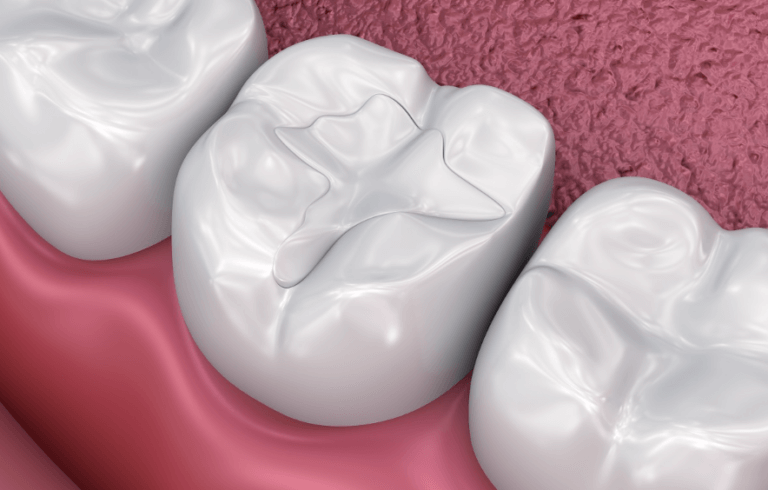
What Is A Glass Ionomer Filling?
A Glass Ionomer Filling is a dental restorative material that is used to repair cavities and minor tooth defects. It is composed of a unique combination of glass particles and an organic acid, which forms a hard yet flexible substance once it sets in the tooth. This type of filling is renowned for its biocompatibility and ability to release fluoride, making it an excellent option for certain dental applications. Before deciding on whether a Glass Ionomer Filling are right for you, there are some things you should know:
- Who Needs A Glass Ionomer Filling?
- What Are The Advantages Of A Glass Ionomer Filling?
- What Are The Alternative Treatments If I Do Not Choose A Glass Ionomer Filling?
- How Much Does A Glass Ionomer Filling Cost?
- What Are The Steps In The Glass Ionomer Filling Procedure?
- Can I Have A Glass Ionomer Filling If I Am Pregnant?
- How Long Does A Glass Ionomer Filling Last?
- What Are Common Problems with A Glass Ionomer Filling?
If you have any further questions about A Glass Ionomer Filling or other dental services offered at Atlas Dental, please contact us.

Free phone consultation
Have questions about tooth fillings? Schedule a free phone consultation with our Toronto dentist.

5 star google reviews
Our patients love us! See for yourself why more and more people are choosing Atlas Dental for their dental fillings.

Book Emergency tooth filling
Do you think you have cavities and need an appointment? Book an emergency tooth filling online.
Who Needs A Glass Ionomer Filling?
Glass ionomer fillings offer a versatile and effective solution for various dental conditions, making them suitable for a wide range of patients:
- Children and Adolescents: Glass ionomer fillings are particularly beneficial for young patients, including children and adolescents, who are more prone to dental caries (tooth decay). This is due to their ability to release fluoride, which helps prevent further decay in the treated tooth and the adjacent teeth. Additionally, the material bonds well to the tooth structure, making it a suitable option for filling cavities in primary (baby) teeth.
- Patients with Low Salivary Flow: Individuals with medical conditions or medications that reduce salivary flow may be more susceptible to dental decay. The fluoride release of glass ionomer fillings can provide added protection against further decay, making it a suitable choice for patients with dry mouth (xerostomia).
- Small to Medium-Sized Cavities: Glass ionomer fillings are often recommended for filling small to medium-sized cavities, especially in non-load-bearing areas of the mouth. Their ability to chemically bond to the tooth structure enhances their retention and durability.
- Root Surface Decay: Glass ionomer fillings can also be used to treat root surface decay, which commonly occurs in older adults due to gum recession and exposure of the tooth roots.
- Cervical Lesions (Abfraction): Abfraction lesions, which are wedge-shaped defects that form at the tooth’s gumline, can be effectively restored using glass ionomer fillings due to their excellent marginal adaptation and aesthetics.
- Patients with High Cavity Risk: Individuals with a history of frequent cavities or at a higher risk of developing new ones may benefit from glass ionomer fillings as they provide an additional layer of protection with fluoride release.
It is important to note that while glass ionomer fillings offer numerous advantages, they may not be suitable for all situations. In cases of large or load-bearing cavities, your dentist may recommend alternative materials like composite resins or amalgam. The decision on which type of filling to use will depend on the individual patient’s needs, the location and size of the cavity, as well as the dentist’s professional judgment. If you have further questions about Glass Ionomer Fillings, please contact us.
What Are The Advantages Of A Glass Ionomer Filling?
Glass ionomer fillings offer several unique advantages that make them a popular choice for dental restorations:
- Fluoride Release: One of the most significant advantages of glass ionomer fillings is their ability to release fluoride over time. Fluoride is a natural mineral that helps strengthen the tooth enamel and makes it more resistant to acid attacks, reducing the risk of further dental decay in the treated tooth and surrounding teeth. This constant release of fluoride helps provide ongoing protection, especially in individuals with a higher risk of cavities.
- Biocompatibility: Glass ionomer fillings are biocompatible, meaning they are well-tolerated by the body and have a reduced risk of causing adverse reactions. This property is particularly beneficial for patients with allergies or sensitivities to other dental materials.
- Chemical Bonding: Glass ionomer fillings chemically bond to the tooth structure, creating a tight seal at the filling interface. This secure bonding helps prevent microleakage, where bacteria can seep between the tooth and the filling, potentially leading to recurrent decay.
- Versatility: These fillings are suitable for both front and back teeth, making them a versatile option for various dental restorations. They are especially useful for non-load-bearing areas, such as the sides and front of teeth.
- Aesthetics: Glass ionomer fillings can closely match the natural color of the tooth, making them aesthetically pleasing and an excellent choice for visible areas of the mouth. This feature makes them particularly popular for pediatric and cosmetic dental applications.
- Minimal Tooth Preparation: Unlike some other dental filling materials, glass ionomer fillings require minimal tooth preparation, which means less healthy tooth structure needs to be removed during the restoration process. This preserves more of the natural tooth and contributes to its long-term health.
- Helpful in Desensitization: Glass ionomer fillings can be beneficial for patients with tooth sensitivity. The release of fluoride and the material’s ability to seal dentinal tubules can help reduce sensitivity and discomfort.
- Suitable for Primary Teeth: Glass ionomer fillings are an excellent option for treating cavities in primary (baby) teeth due to their fluoride release and ease of application, providing essential protection for young teeth.
While glass ionomer fillings offer numerous advantages, it is essential to consider the specific needs of each patient and the nature of the dental condition before deciding on the most appropriate filling material. A consultation with a knowledgeable dentist can help determine whether a glass ionomer filling is the ideal choice for restoring your dental health and preserving your beautiful smile. If you have further questions about Glass Ionomer Fillings, please contact us.
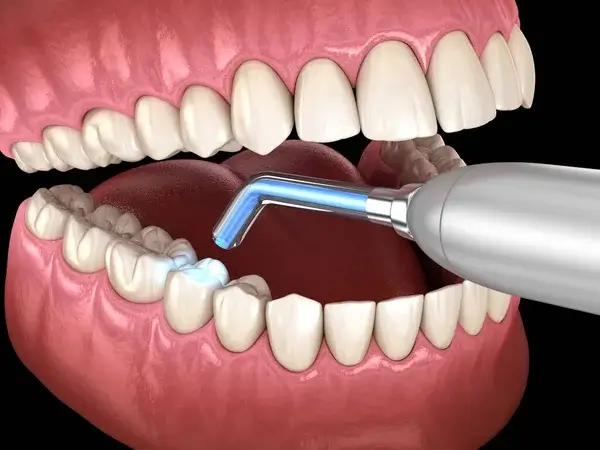
What Are The Alternative Treatments If I Do Not Choose A Glass Ionomer Filling?
While glass ionomer fillings offer a host of advantages, they may not be the ideal choice for every dental situation. Depending on the specific needs of your teeth and the dentist’s recommendation, several alternative tooth filling treatments are available. Here are some commonly used alternatives to glass ionomer fillings:
- Composite Resin Filling: Composite resin fillings are a popular alternative to glass ionomer fillings. They are made from a mixture of plastic and fine glass particles and can be precisely color-matched to your natural teeth, providing a seamless and aesthetically pleasing restoration. Composite resin fillings bond well to the tooth structure, which helps prevent leakage and supports the tooth’s overall strength. They are an excellent choice for both front and back teeth and are particularly suitable for small to medium-sized cavities.
- Amalgam Filling: Amalgam fillings, also known as silver fillings, have been used for decades as a reliable and durable dental restoration. They are composed of a mixture of metals, including silver, mercury, tin, and copper. Amalgam fillings are known for their strength and longevity, making them an excellent option for large and load-bearing cavities in the back teeth. However, due to their dark color, they are more noticeable than glass ionomer or composite fillings, which may be a consideration for patients concerned about aesthetics.
- Porcelain Inlay: Porcelain inlays are custom-made restorations created in a dental laboratory. They are used to repair larger cavities or replace old, failing fillings. Porcelain inlays offer exceptional strength and natural appearance, as they can be precisely matched to the color of your teeth. These restorations are bonded to the tooth, providing an excellent seal and durability.
- Porcelain Onlay: Porcelain onlays are similar to inlays but cover a more extensive portion of the tooth’s chewing surface. They are used when the damage to the tooth extends beyond the center but does not require a full dental crown. Porcelain onlays offer the advantage of preserving more of the healthy tooth structure compared to dental crowns while providing a strong and aesthetically pleasing restoration.
- Dental Crown: A dental crown, also known as a cap, is a custom-made restoration that completely covers the entire visible portion of a damaged tooth. Dental crowns are used when a tooth has significant decay or damage, and other filling options may not be sufficient. Crowns can be made from various materials, including porcelain, metal, or a combination of both. They provide exceptional strength and protection for weakened teeth.
- Dental Veneer: Dental veneers are thin shells of porcelain or composite resin that are custom-made and bonded to the front surface of teeth to improve their appearance. They are an alternative to fillings for treating minor cosmetic issues, such as chipped or discolored teeth.
Each of these alternative treatments has its own set of advantages and considerations. The choice of the most appropriate restoration will depend on factors such as the size and location of the cavity, the tooth’s condition, and the patient’s aesthetic preferences. If you have further questions about Glass Ionomer Fillings, please contact us.
Cost of Glass Ionomer Fillings
Whether it is an amalgam filling, composite resin filling, or glass ionomer filling, the cost of any of these Dental Fillings are similar and will depend on the location of the tooth (anterior, bicuspid or molar), as well as the size of the filling, which is translated as the number of “surfaces” involved. Imagine each tooth as a 5 surface box. Each “surface” that gets incorporated will dictate the size (and overall cost) of the tooth filling. Therefore, the cost of a filling can range between $200-460. The codes relevant to dental fillings in the Ontario Dental Association’s Suggested Fee Guide appear as follows:
Permanent Anteriors:
- 23111 – One surface: $200
- 23112 – Two surfaces: $250
- 23113 – Three surfaces: $300
- 23114 – Four surfaces: $370
- 23115 – Five surfaces (maximum surfaces per tooth): $390
Permanent Bicuspids:
- 23311 – One surface: $220
- 23312 – Two surfaces: $275
- 23313 – Three surfaces: $330
- 23314 – Four surfaces: $400
- 23315 – Five surfaces or maximum surfaces per tooth: $420
Permanent Molars:
- 23321 – One surface: $240
- 23322 – Two surfaces: $300
- 23323 – Three surfaces: $360
- 23324 – Four surfaces: $440
- 23325 – Five surfaces or maximum surfaces per tooth: $460
Dental Fillings are considered a basic service under all dental insurance plans and should be covered to your maximum insurable limit, but be sure to find out from your dental insurance plan provider how much you are eligible for before going ahead with dental treatment. Our fees are consistent with the ODA Fee Guide.
For patients without dental insurance, Atlas Dental is pleased to offer dental financing through Dentalcard. Affordable payment plans start at 7.95% for terms of 6 months to 6 years. To learn more about Dentalcard dental treatment financing, follow this link.
What Are The Steps In The Glass Ionomer Filling Procedure?
Your dentist will follow these steps during the glass ionomer filling procedure:
- Initial Examination and Assessment: During your dental visit, the dentist will conduct a thorough examination of your teeth, which may include dental X-rays to identify cavities or other dental issues. If a cavity or dental damage is detected and a glass ionomer filling is deemed suitable, your dentist will explain the procedure and answer any questions you may have. Please review these tooth filling pre-visit instructions before your appointment.
- Local Anesthesia and Tooth Preparation: The first step is to prepare the tooth for the filling. The dentist will remove any tooth decay or damaged tooth material using dental instruments. To ensure a painless experience, the dentist may administer local anesthesia to numb the area around the tooth being treated. This ensures that you feel little to no discomfort during the procedure.
- Tooth Isolation: Once the tooth is prepared, your dentist will isolate it from moisture and other oral fluids using a dental dam or a cotton roll. Isolating the tooth is essential to keep it dry during the filling process, as moisture can interfere with the bonding of the glass ionomer material.
- Application of Conditioner: Next, the dentist may apply a tooth conditioner or an acid etchant to the prepared tooth surface. This step creates microscopic pores in the enamel, which enhances the bond between the glass ionomer filling and the tooth structure.
- Placement of Glass Ionomer Material: The dentist will place the glass ionomer filling material into the prepared cavity. The material is soft and malleable, allowing the dentist to shape it to fit the contours of the cavity accurately. Once in place, the dentist will use a special dental instrument to pack and sculpt the material for a proper fit.
- Curing the Filling: Unlike some other dental materials that require a curing light, glass ionomer fillings harden through a process called “setting” or “chemical curing.” The material will gradually harden and bond to the tooth structure over a short period, usually within a few minutes.
- Finishing and Polishing: After the glass ionomer material has set, the dentist will trim off any excess filling material and polish the filling to achieve a smooth and natural appearance. Proper finishing and polishing enhance the comfort of the filling and help prevent plaque buildup on its surface.
- Bite Adjustment: The dentist will check your bite to ensure that the filling does not interfere with your natural bite alignment. If necessary, minor adjustments may be made to achieve proper occlusion (how your teeth fit together when biting down).
- Post-Treatment Care and Instructions: Once the filling procedure is complete, your dentist may provide you with specific dental filling post-treatment care instructions. These instructions typically include avoiding hard or sticky foods for a short period, maintaining good oral hygiene practices, and attending regular dental check-ups.
Glass ionomer fillings are generally well-tolerated, and patients can resume normal eating and drinking shortly after the procedure. However, it is essential to follow the dentist’s recommendations for optimal healing and long-term success of the filling. If you have further questions about Glass Ionomer Fillings, please contact us.
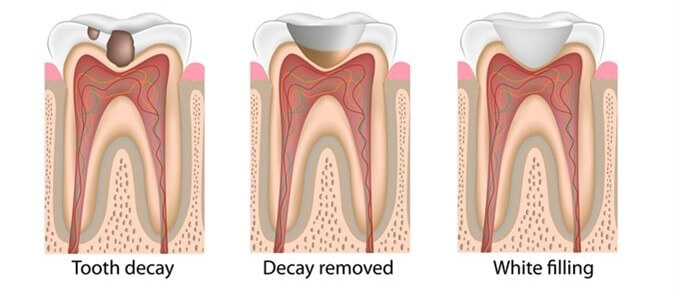
Can I Have A Glass Ionomer Filling If I Am Pregnant?
While glass ionomer fillings are generally considered safe during pregnancy, it is crucial to communicate with your dental and healthcare providers. Dental issues, such as tooth decay and cavities, can arise during pregnancy, making dental treatments necessary:
- Safety of Glass Ionomer Fillings: Glass ionomer fillings are generally considered safe and biocompatible dental restorations. They contain non-toxic materials, and their fluoride-releasing properties can even be beneficial in preventing further tooth decay. The fluoride release helps protect both the treated tooth and adjacent teeth from acid attacks.
- Minimal Mercury Concern: Unlike amalgam fillings that contain small amounts of mercury, glass ionomer fillings are mercury-free. This makes them a favorable option for pregnant women who may have concerns about exposure to mercury during dental treatments.
- X-ray Considerations: During pregnancy, dental x-rays are generally minimized to reduce potential risks to the developing fetus. While glass ionomer fillings may not require x-rays for placement, your dentist may consider other diagnostic options or choose alternative restorative materials that require minimal or no x-rays.
- Anesthesia Safety: Local anesthesia used during dental procedures is generally considered safe during pregnancy. However, it is essential to inform your dentist if you are pregnant or suspect you might be, as this information can help them take any necessary precautions.
- Timing of Dental Treatment: If possible, it is advisable to avoid elective dental treatments during the first trimester of pregnancy, as this is a critical period for fetal development. However, if you have urgent dental issues, such as cavities causing pain or infection, dental treatment, including glass ionomer fillings, can be performed at any stage of pregnancy. The benefits of addressing dental problems promptly often outweigh potential risks.
- Consultation with Healthcare Providers: Before undergoing any dental treatment during pregnancy, it is crucial to inform both your dentist and obstetrician about your pregnancy. They can work together to assess your oral health needs and determine the most appropriate timing and treatments.
- Overall Oral Health during Pregnancy: Maintaining good oral hygiene practices and seeking regular dental check-ups are essential throughout pregnancy. Proper oral care, including brushing, flossing, and a balanced diet, can help reduce the risk of dental issues during this crucial time.
Prioritizing your oral health during pregnancy contributes to overall well-being and can lead to a healthy smile for both you and your baby. If you have further questions about Glass Ionomer Fillings, please contact us.
How Long Does A Glass Ionomer Filling Last?
On average, a well-maintained glass ionomer filling can last anywhere from 5 to 7 years, though some may endure for up to 10 years or more under favorable conditions. The lifespan of a glass ionomer filling can vary depending on several factors:
Several factors contribute to the longevity of a glass ionomer filling:
- Oral Hygiene Practices: Proper oral hygiene, including regular brushing, flossing, and using mouthwash, is vital for the longevity of any dental restoration. Maintaining good oral hygiene helps prevent new cavities from forming around the filling and maintains the overall health of the surrounding teeth and gums.
- Dietary Habits: A diet high in sugary or acidic foods and beverages can increase the risk of cavities and deterioration of dental restorations. Limiting the intake of such foods and practicing moderation can help extend the lifespan of the filling.
- Bite Force and Grinding: Excessive teeth grinding (bruxism) or an uneven bite can put additional stress on the filling and lead to premature wear or failure. Wearing a nightguard if you grind your teeth and addressing any bite alignment issues can help protect the filling from excessive forces.
- Size and Location of the Filling: The size and location of the cavity being filled can influence the longevity of the restoration. Smaller fillings in non-load-bearing areas generally tend to last longer than larger fillings in high-stress areas like molars.
- Quality of the Filling Material: The quality and brand of the glass ionomer filling material used by the dentist can impact its durability. High-quality materials and precise application techniques can contribute to a longer-lasting restoration.
- Regular Dental Check-ups: Regular dental check-ups allow the dentist to monitor the condition of the filling and address any concerns before they escalate. Early detection and treatment of potential issues can help prolong the life of the filling.
- Replacement of Worn Fillings: If the glass ionomer filling starts to wear, crack, or show signs of deterioration, timely replacement is crucial to prevent further damage to the tooth and surrounding structures.
It’s important to remember that all dental restorations have a finite lifespan and may eventually need replacement. If you have a glass ionomer filling or any other dental restoration, routine dental visits are essential. Your dentist will assess the condition of the filling during check-ups and recommend appropriate measures to maintain your oral health and the longevity of the restoration. If you have further questions about Glass Ionomer Fillings, please contact us.
What Are Common Problems with A Glass Ionomer Filling?
While glass ionomer fillings are a reliable and popular dental restoration, like any dental material, they may experience certain issues over time:
- Wear and Tear: Over time, the glass ionomer filling may experience wear and tear, especially in high-stress areas of the mouth, such as molars. Grinding or clenching of teeth (bruxism) can also contribute to the wearing down of the filling material.
- Chipping or Cracking: In some cases, glass ionomer fillings may chip or crack, especially if they are subjected to excessive force or impact. This can lead to gaps between the filling and the tooth, increasing the risk of further tooth decay.
- Staining or Discoloration: Glass ionomer fillings can become discolored or stained over time due to exposure to certain foods, beverages, or tobacco products. While the discoloration does not usually affect the functionality of the filling, it can impact the aesthetics of the restoration.
- Leakage and Microleakage: Microleakage occurs when there is a tiny gap between the filling and the tooth structure, allowing bacteria and debris to seep underneath the filling. This can lead to recurrent decay and other dental issues.
- Tooth Sensitivity: In some cases, patients may experience tooth sensitivity after getting a glass ionomer filling. This sensitivity is usually temporary and should subside within a few days to a week after the procedure. However, persistent sensitivity may indicate other underlying issues that need to be addressed.
- Premature Filling Loss: In rare cases, a glass ionomer filling may prematurely dislodge or fall out due to improper bonding or inadequate tooth preparation. If this happens, it is essential to seek prompt dental attention to prevent further damage.
It’s important to note that while these issues can occur, glass ionomer fillings are still considered to be a reliable and effective dental restoration option, especially in specific clinical situations. Regular dental check-ups and maintaining good oral hygiene practices can help identify and address any potential problems with the filling early on, ensuring its long-term success. If you have further questions about Glass Ionomer Fillings, please contact us.
We also think you’ll like…
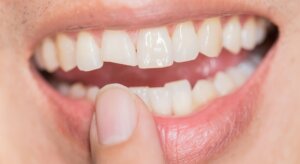
Missing Tooth Filling
Missing Tooth Filling What Is A Missing Tooth Filling? A dental filling is a common treatment used to fix a tooth that has been damaged
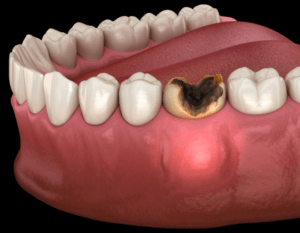
Pulp Necrosis
Pulp Necrosis What Is Pulp Necrosis? Pulp Necrosis is a dental condition that occurs when the innermost tissue of a tooth, known as the pulp,
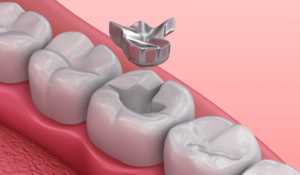
Amalgam Filling
Amalgam Filling What Is An Amalgam Filling? An Amalgam Filling is a dental restorative material used to repair teeth that have been compromised by dental
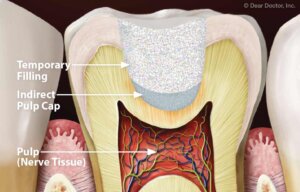
Indirect Pulp Capping
Indirect Pulp Capping What Is Indirect Pulp Capping? Your dental health is a crucial part of your overall well-being, and it’s essential to stay informed
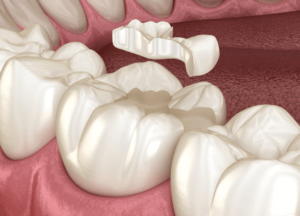
Porcelain Inlay Recementation
Porcelain Inlay Recementation What Is Dental Inlay Recementation? A Porcelain Inlay is a type of dental restoration crafted from high-quality, biocompatible porcelain material. These restorations
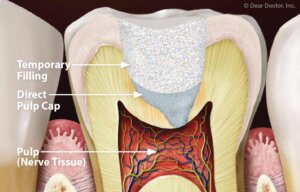
Direct Pulp Capping
Direct Pulp capping What Is Direct Pulp Capping? Your dental health is a crucial part of your overall well-being, and it’s essential to stay informed

